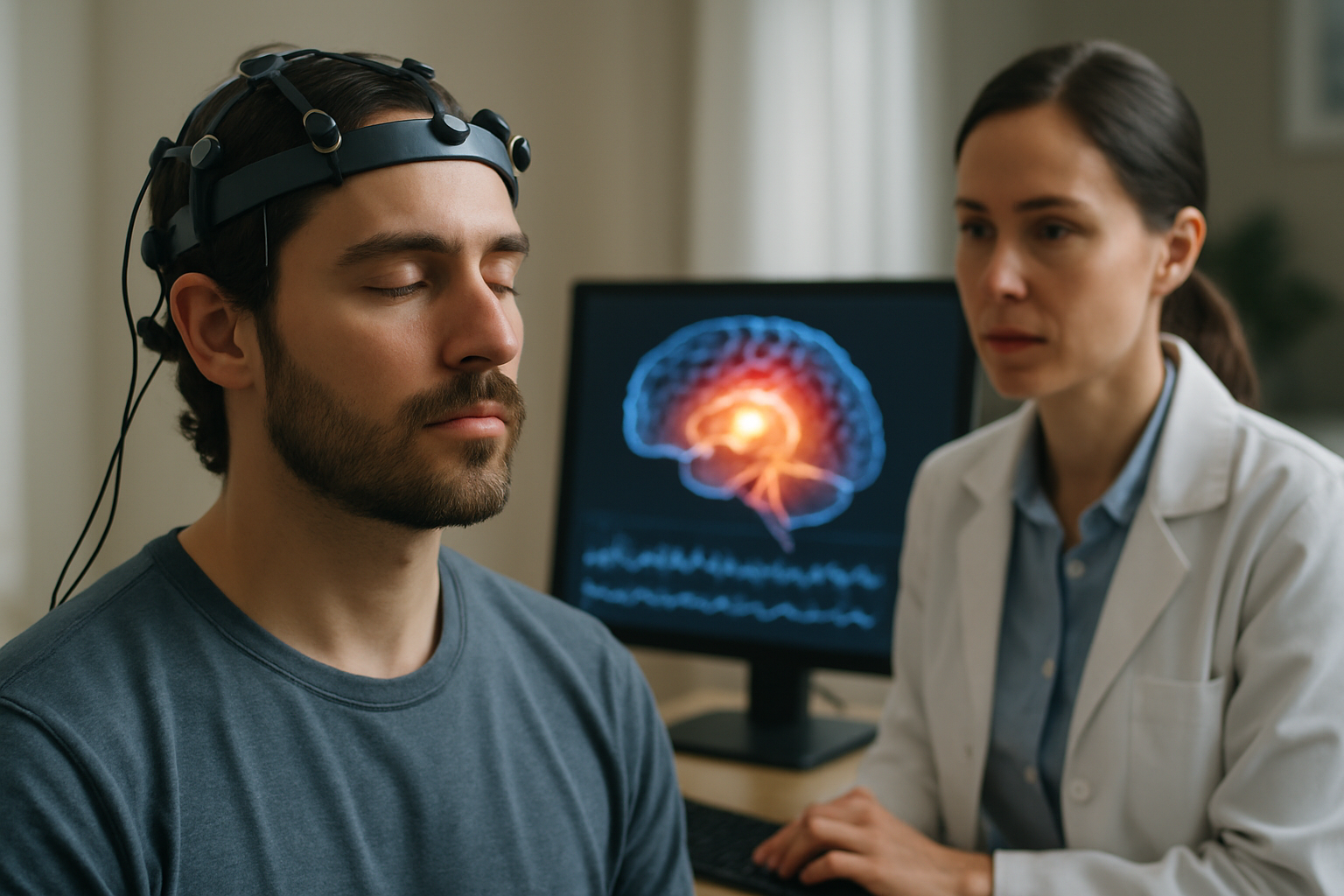Neurofeedback Therapy: Training Your Brain for Optimal Performance
Can you imagine a world where you could train your brain like a muscle, enhancing cognitive abilities and emotional regulation with the power of your mind? Welcome to the fascinating realm of neurofeedback therapy, a cutting-edge approach that's revolutionizing mental health and performance optimization.

The process begins with placing electrodes on the scalp to measure electrical activity in the brain. This activity is then displayed in real-time on a computer screen, typically in the form of a game or visual representation. As the individual engages with the feedback, they learn to modulate their brain waves, promoting more efficient neural functioning.
A Brief History of Brain Training
The concept of neurofeedback dates back to the 1960s when researchers discovered that humans could learn to control their brain waves. Dr. Joe Kamiya, a pioneer in the field, demonstrated that people could consciously alter their alpha brain waves when given audio feedback. This groundbreaking work laid the foundation for modern neurofeedback techniques.
In the following decades, neurofeedback evolved from a purely experimental endeavor to a recognized therapeutic tool. Early applications focused on treating epilepsy and attention deficit disorders. As technology advanced, so did the precision and efficacy of neurofeedback protocols, expanding its potential applications across various mental health conditions and performance enhancement domains.
Applications in Mental Health
Neurofeedback therapy has shown promising results in treating a wide range of mental health conditions. Research indicates its effectiveness in managing symptoms of ADHD, anxiety, depression, and PTSD. By targeting specific brain regions and frequencies, neurofeedback can help regulate mood, improve focus, and reduce symptoms associated with these disorders.
For individuals with ADHD, neurofeedback training often focuses on enhancing beta waves in the frontal lobes, which are associated with attention and executive function. Studies have shown that this approach can lead to significant improvements in attention span, impulse control, and academic performance.
In the treatment of anxiety and depression, neurofeedback typically aims to balance alpha and theta waves, promoting a state of calm alertness. This can help reduce excessive worry, improve emotional regulation, and enhance overall mood stability.
Enhancing Cognitive Performance
Beyond its therapeutic applications, neurofeedback has gained popularity as a tool for cognitive enhancement among healthy individuals. Athletes, executives, and performers are turning to this technology to sharpen their mental acuity and gain a competitive edge.
Neurofeedback training can target specific cognitive functions such as working memory, processing speed, and creative thinking. By strengthening neural networks associated with these abilities, individuals may experience improvements in their professional and personal lives.
For instance, a study published in the Journal of Neurotherapy found that neurofeedback training improved working memory and verbal cognitive performance in healthy adults. Another research project demonstrated enhanced musical performance among conservatory students who underwent neurofeedback sessions.
The Personalized Approach
One of the most compelling aspects of neurofeedback therapy is its highly personalized nature. Each individual’s brain is unique, and neurofeedback protocols can be tailored to address specific needs and goals. This personalized approach begins with a comprehensive assessment, often including a quantitative EEG (QEEG) to map brain activity patterns.
Based on this assessment, a customized training protocol is developed. This may involve targeting specific brain regions, frequencies, or networks that are under- or over-activated. As the individual progresses through sessions, the protocol can be adjusted to ensure optimal results.
Challenges and Considerations
While neurofeedback shows great promise, it’s important to approach it with a balanced perspective. The field is still evolving, and more research is needed to fully understand its long-term effects and optimal protocols for various conditions.
One challenge is the variability in training methods and equipment across practitioners. This can make it difficult to standardize treatments and compare results across studies. Additionally, the cost and time commitment required for neurofeedback therapy can be substantial, potentially limiting access for some individuals.
It’s also crucial to note that neurofeedback should not be seen as a standalone solution but rather as part of a comprehensive approach to mental health and wellness. Integrating neurofeedback with other evidence-based interventions, such as psychotherapy and lifestyle modifications, may yield the best outcomes.
The Future of Brain Training
As technology continues to advance, the future of neurofeedback looks promising. Emerging trends include the integration of virtual reality to create more immersive training experiences and the development of portable, user-friendly devices for at-home use.
Researchers are also exploring the potential of combining neurofeedback with other neuromodulation techniques, such as transcranial magnetic stimulation (TMS), to enhance therapeutic effects. This synergistic approach could open new avenues for treating complex neurological and psychiatric conditions.
Brainwave Basics
-
Delta waves (0.5-4 Hz): Associated with deep sleep and healing
-
Theta waves (4-8 Hz): Linked to creativity, intuition, and deep relaxation
-
Alpha waves (8-12 Hz): Promote calmness, alertness, and mental coordination
-
Beta waves (12-30 Hz): Involved in conscious thought, logical thinking, and focus
-
Gamma waves (30-100 Hz): Associated with high-level information processing and cognitive performance
In conclusion, neurofeedback therapy represents a fascinating intersection of neuroscience, technology, and personal empowerment. By harnessing the brain’s neuroplasticity, this innovative approach offers new possibilities for mental health treatment and cognitive enhancement. As research progresses and technology evolves, neurofeedback may play an increasingly significant role in our quest for optimal brain function and overall well-being.





